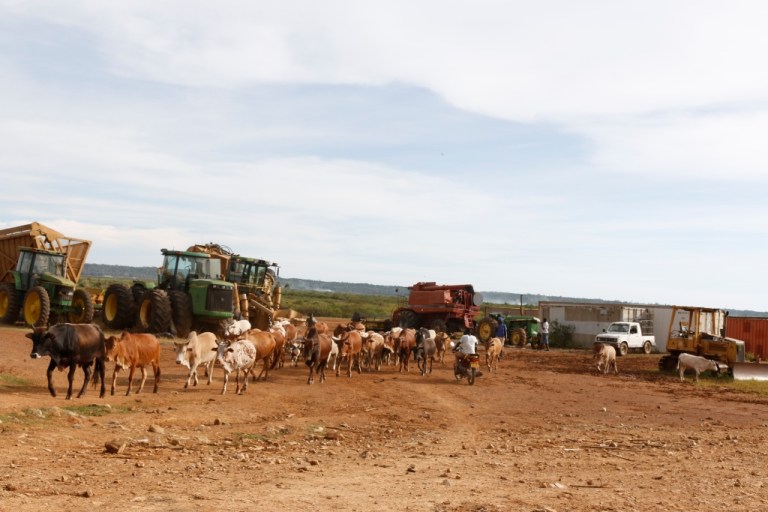
June 2019
The story of Yala Swamp and Dominion Farms Limited reads like any sad, unfortunate tale, typical of land acquisition deals gone awry. Often times involving big, powerful companies and local, poor communities, the script almost certainly reads the same.
Usually, the community is very minimally involved in such deals, if at all. Anything approaching consultations of any nature generally takes the shape of engaging two or three handpicked community elders and the political elite.
It is not surprising therefore, that the championing of the community’s interests by these leaders is largely passive if not mute, otherwise they (the leaders) are by and large perceived to be towing the company line.
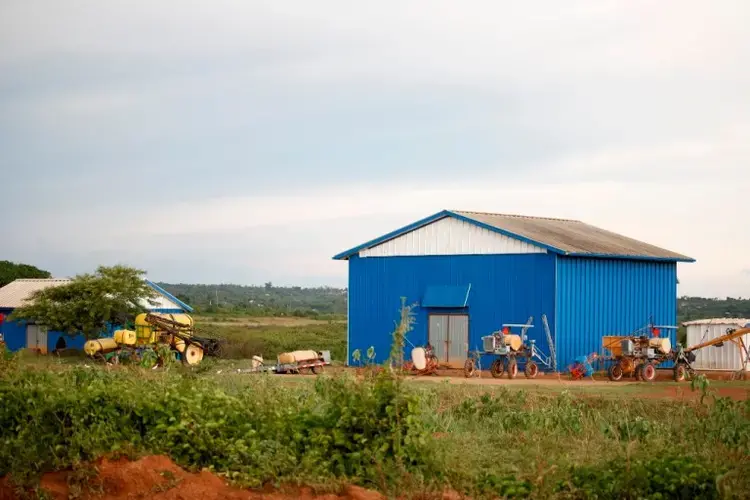
Rifts end up being created between and among communities, opportunities are squandered, huge investment losses are amassed and promises lie shattered.
The end result is that either the community finds itself where it was prior to the land acquisition deal or that it is left worse off than at the beginning.
The Yala-Swamp-Dominion-Farms-Limited land acquisition saga is no different. A similar set of events appear to have played out in this regard. The community involvement was less than adequate to begin with – an obvious flashpoint for conflict.
“No proper channels were followed,” says Jacob Ouma, the area chief of Kadenge Sub-location of Siaya County, which is located inside the swamp, a drive of nearly two hours north-west of the Lake City of Kisumu. He is referring to the manner in which Dominion Farms Limited ended up occupying the swamp land.
Yala Swamp has potential to improve Kenya's ranking in SDGs 14 and 15 https://t.co/CDq6xakbfY
— HozeMuftu (@HozeMuftu) May 29, 2019
Before the American investors came calling however, part of the land was controlled by the Lake Basin Development Authority (LBDA), an oversight government agency in the Lake Victoria Basin.
At the time, LBDA used to occupy the left-hand side of the swamp, whereas the community worked the land on the right-hand side.
Philip Oloo, the Manager in charge of agriculture and natural resources at the LBDA says that the Authority was not operating on full land ownership, because it is community land. It was held in trust by the county council.
“The swamp was not fully maximized to its potential, hence the need for partnership with other people to develop it,” says Oloo.
And this is where the idea of the Dominion Farms Limited came in. The investor was given a lease of 25 years to initiate agricultural projects, which included rice, banana, and sugarcane as well as cotton production in addition to aquaculture farming.
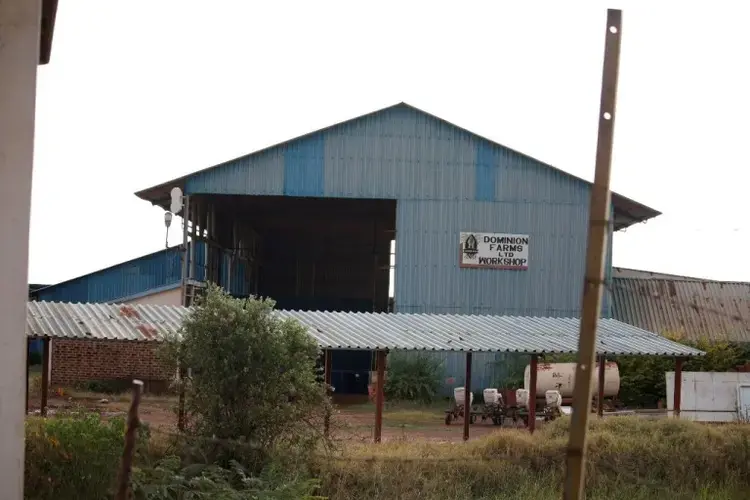
Already, the Kenyan government had provided an outlay of 120 million Kenya shillings ($1.2 million) which went into the construction of a weir. At the time, the LBDA was aiming to reclaim 12,000 hectares of the swamp in order to develop it.
It had managed to reclaim 2,300 hectares in phase I of the initiative. Phase II of the land reclamation project was to be undertaken in conjunction with Dominion Farms Limited. It never came to be fully implemented, given that the exercise required heavy funding.
Touted as the single largest investment project in the Lake Victoria region of Kenya, the Dominion Farms’ agricultural interests were seen as a major boon to the economy of Siaya County.
Besides creating jobs for the people here, it was also hoped that this investment windfall would have the ripple effect of stimulating the entire economy of the poverty-afflicted lake basin region.
But in order to set up shop in the expansive 200km2 Yala Swamp, Dominion Farms Limited had to navigate the often-time challenging land acquisition hurdles. This is something that the company obviously failed, leading to bitter disputes between the management and the community.
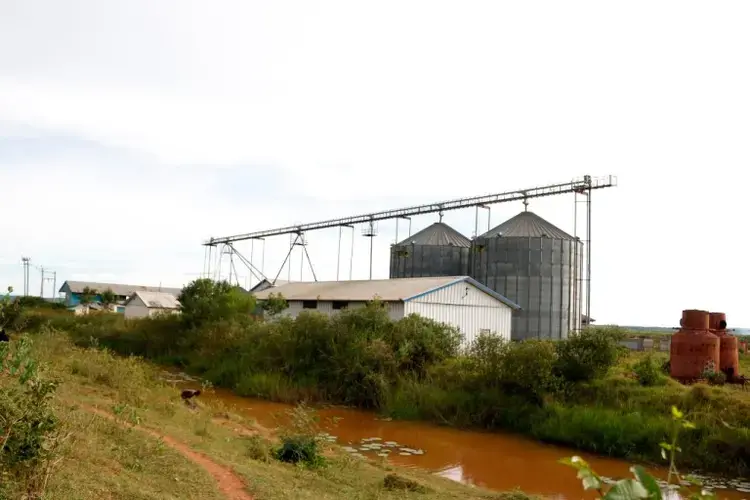
The sidelining of the community was very much in evidence with the signing of a Memorandum of Understanding (MOU) between the company and the then county council of Bondo and that of Siaya. No community input was considered, he says.
“This elicited serious disagreements,” he recalls, adding that once the project was up and running, the revenue thus generated was diverted. The revenue was supposed to be ploughed back into the community.
These sentiments are echoed by Oloo.
“There was no programme for information sharing, by Dominion Farms with the community or LBDA,” he explains. In other words, the American investors decided to leave out key players in the matter.
However, according to Oloo, not only did Dominion Farms Limited sideline critical stakeholders, the company decided to go it alone and work with the county councils of Bondo and Siaya instead.
The land having been taken by the company, the people had no means of livelihood. Either way, they had to survive by hook or by crook. So, community members would force their way back into the swamp, clearing papyrus reeds in readiness for planting and subsistence.
However, they would be driven away, soon after. Approximately 6,000 people were displaced as a result, according to Ouma.
[COUNTIES] NLC steps in to end Yala Swamp, Dominion Farms row: A report indicates that chemicals used in rice fields endanger water purity. https://t.co/fsF2TSAnAf
— Breaking News (@News_Kenya) March 7, 2019
Whereas the land acquisition fiasco left a sour taste in the mouth for many people, to condemn the project wholesale on the other hand, would be disingenuous. The fact of the matter is that Dominion Farms’-led initiatives also had some positive impact on the lives of community members.
Indeed, a number of schools became beneficiaries of the corporate social responsibility programmes initiated by the farm. This included Kanyaboli, Nyaluta and Obambo primary schools.
For example, two classrooms were constructed at Gendro Primary School in addition to having its playground rehabilitated. Wrought-iron goalposts were also erected on the football grounds in place of those made of wooden poles.
“The Dominion Farms also wanted to construct a modern laboratory at the Kadenge Ratuoro Health Centre, but for the objections of the community,” says Ouma.
The reason for their reservations, he explains, were rumours doing the rounds to the effect that the idea of a laboratory was nothing more than a ploy for Dominion Farms to take complete control of the centre.
#WorldEnvironmentDay Destruction of the Yala Swamp. It is a wetland in Siaya Kenya. @sopa_Int needs partners to help in its conservation. pic.twitter.com/2lFCEj5bzS
— Seeds of Peace Africa (@sopa_Int) June 5, 2017
Veronica Ombwa, a research scientist at the Kenya Marine and Fisheries Research institute (KMFRI) is in praise of what the American company was trying to do. She was attached at the company in 2011 when she was carrying out research on aquaculture.
“It was doing a commendable job in rearing the tilapia and the African cat fish…it had over 100 fish ponds,” she adds.
She points out the fact that Dominion Farms were the first of any organization or individual to take up and implement research by the institute. This is how cage fish farming came to be introduced inside Lake Victoria properly in 2005.
“The locals adopted cage fish farming simply because the company had already charted the way forward,” explains Ombwa who is an aquaculture specialist with expertise in microbiology analysis.
The one thing practice that Ombwa did not agree with was the aerial spraying of chemicals by the company on the swamp. These concerns were never far behind in the minds of many people.
“They were roundly accused of polluting the environment by their aerial spraying sorties on their rice paddies against pests, weeds and destructive bird,” recalls Ouma.
“Fish would be found dead in the feeder canal connecting River Yala and Lake Kanyaboli, which is part of the swamp,” he states.
The seriousness of the issue compelled the local administration, in conjunction with the Water Resources Management Authority (WARMA) and the Fisheries Department to call for a study to ascertain the veracity of these claims in 2010.
“But nothing came of it since,” says Ouma.
The environmental significance of the swamp cannot be overstated, especially as it is tied in with the wellbeing of the Lake Victoria ecosystem as a whole.
“The swamp acts like a purifier of River Yala before it drains into Lake Victoria,” explains Dr. Christopher Aura, assistant director of Freshwater Systems Research at the KMFRI’s Kisumu Centre.
He says that the swamp rids the river of such chemical elements as phosphorus, nitrates and others contained in pesticides from nearby farms. It also acts as the breeding ground for the African cat fish fry.
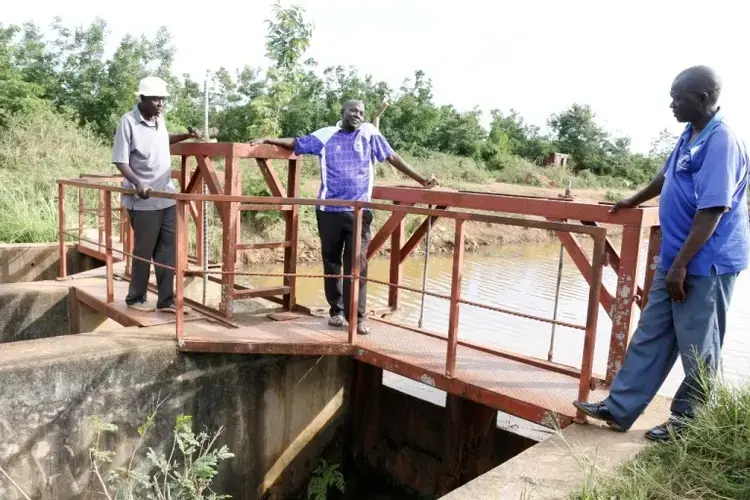
A recent technical scientific report (it is in the process of being published in a scientific journal) by the KMFRI, shows that two rivers, north of Lake Victoria are the major contributors of pollution into the lake. These are River Nzoia and River Yala respectively.
There is a paper milling factory adjacent to River Nzoia and Dominion Farms Limited is next to River Yala. These are factors that could be contributing to the pollution, according to Dr. Aura.
However, the pollution from Rivers Sondu and Kuja found on the south of the lake are minimal compared to the other two in the north.
These latest findings are consistent with another study published in 2014 in the International Journal of Science and Research (IJSR).
“This study observes that degradation of the environmental resource base such as excessive resource extraction and severe land use by Dominion Irrigation Project has not only affected the quantity and quality of the services that are produced by ecosystems, but has also challenged the resilience of the Wetland to ensure sustainable development for the households in South Central Alego.”
In 2018, Dominion Farms Limited left the region, 12 years earlier than the lease agreement period.
There is nothing going on at the premises. One is met by towering rice silos and a sugarcane processing plant that are sitting eerily idle. They are slowly falling into disrepair.
There is nothing going on inside the big workshop either. Yet, the yard is littered with an assortment of heavy agricultural equipment, including tractors and ploughing machines.
It is rather fascinating to have all this equipment sitting idly by, given that they are still in good working condition and look rather new.
The only activity visible in this compound is that of cattle grazing or milling around the equipment. Or that you are likely to come across mothers bathing their naked toddlers, with glistening dark skins besides a small stream, snaking its way around.
The incongruity presented by this desolate scene is rather breathtaking, in a magnificent, yet odd sort of way.
Oloo of the LBDA explains that lease agreements prohibit the use of land for other purposes than the originally intended one. This includes letting the land lie idle.
In other words, the fact that the land continues to be unused could set off a set of legal events culminating in it reverting to the original owners. Time will tell.
Land acquisition deals in Kenya
Just like many other countries in Africa, Kenya has not been immune to the temptation of leasing out land to foreign multinational companies or governments. These lands are used by investors for food and/ or biofuels production that benefit their home populations or for profit.
The number of land deals that have been signed and concluded in Kenya since the year 2000, stand at 11. This is according to Land Matrix, an independent global land monitoring initiative, which promotes transparency and accountability in decisions over large-scale land acquisitions in low-and middle-income countries around the world.
Out of all these deals, only two fell through after being concluded and signed. Both the Dominion Group and Bedford Biofuels land deals were later abandoned.
Source: LandMatrix, 2019
With 160,000ha allocated to the project, the Bedford Biofuels is the largest of any such deals yet, under the Land Matrix’s criterion of looking into deals exceeding 200ha. The project had intended to invest in jatropha plantations in the Tana River Delta.
The smallest land deal was the 300ha acquired by Asante Capital EPZ Moringa SCA SICAR. Investment to the tune of $600 had been made for the production of such medicinal plants as moringa and ginger as well as eucalyptus.
The Dominion Group’s 6,000ha land acquisition of the Yala Swamp in Siaya County, was meant for a number of agricultural projects. This included rice, sugarcane and integrated poultry and fish production.
Out of all these land acquisitions, only two are yet to take off. This includes the 40,468ha deal by the Arafco Agricultural Integration Company Ltd of the Prince Sultan Bin Nassir Bin Abdulaziz Al-Said of Saudi Arabia.
This project would have seen a $216million sugar project established at the Galana Ranch in Malindi, at the Kenyan coast. Conceived in 2010, its fate is yet to be determined given the disagreements amongst investors. It is the second largest land acquisition deal to have been approved in the country.
And then there is the 7,000ha Actis Capital LLP Craftskills Wind Energy International of Kenya deal. Projected to generate 100MW of power, the project is set to become the second largest wind power project in the country after the 310MW Lake Turkana Wind Power project.
This story was produced in partnership with InfoNile and Code for Africa with support from the Pulitzer Center.
- View this story on Science Africa










